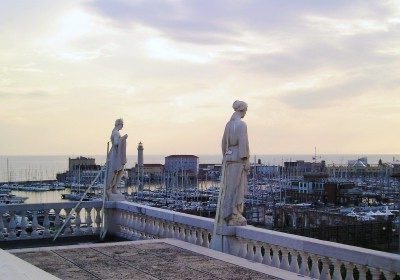
A friend asked me for a draft itinerary in Friuli Venezia Giulia for a few days. I have planned one of four nights which, at this point, I wish to share with you all. The itinerary is questionable, of course, but it intends to make a rudimentary selection that may be useful to those who make a small tour in this border region for the first time. I emphasize that the itinerary favors the historical-artistic aspect, rather than the naturalistic one.
Usually, I prefer to mark the time available in nights, rather than the classic "days", because I find the latter category quite interpretable (you never understand how much time you have in the first and last day). I therefore suggest splitting the four nights equally between Udine e Trieste (two plus two). TO Trieste, in particular, I indicate an address in which to sleep, TheHidden Tree (not exactly low cost, but deserving and unique in its kind). Given the limited time, choices need to be made: I recommend seeing Udine (Palazzo Patriarcale with the Tiepolo Galleries, Duomo, Chiesa della Purità) in the space of an afternoon and an evening (the ritual of tajut, a glass of wine in company is a must): the Venetian charm and elegance of this city they will surprise you. In the surroundings of Udine, do not miss to visit the sumptuous Villa Manin in Passariano di Codroipo (which in 1797 hosted Napoleon Bonaparte and his troops and which was the seat, in the same year, of the Treaty of Campoformio) and the Lombard Cividale del Friuli. Along the road between Udine and Trieste (round trip) you should not miss a visit to the fortress-city of Palmanova (from the star plant, well preserved), to Aquileia and its mosaics, to the Grado lagoon and, if the light permits, to the Nature Reserve of the Isonzo Mouth. In Trieste (stop for a day and a half, arriving in the evening) a visit to the suggestive Miramare Castle and its Habsburg reminiscences, the magnificent Duomo, the Revoltella Museum (the accommodation by Carlo Scarpa is very valid), to the literary cafes (the Caffè Tommaseo is one of the most characteristic, but there is plenty of choice) that dot the historic center (following in the footsteps of Svevo, Joyce and Saba , just to name a few) and, if there is time and a good dose of good humor, the Risiera di San Sabba (which after 8 September 43 became a prison camp and also housed crematory ovens). Advice: come to think of it, visit San Sabba first, so as not to greet Trieste with a bitter taste in your mouth; visit Miramare in or out of the city, given its location and the abundant (almost perennial) flow of tourists. I recommend visiting Friuli Venezia Giulia in late spring, a season that I prefer for the “Habsburg” destinations. Have a good trip.

























